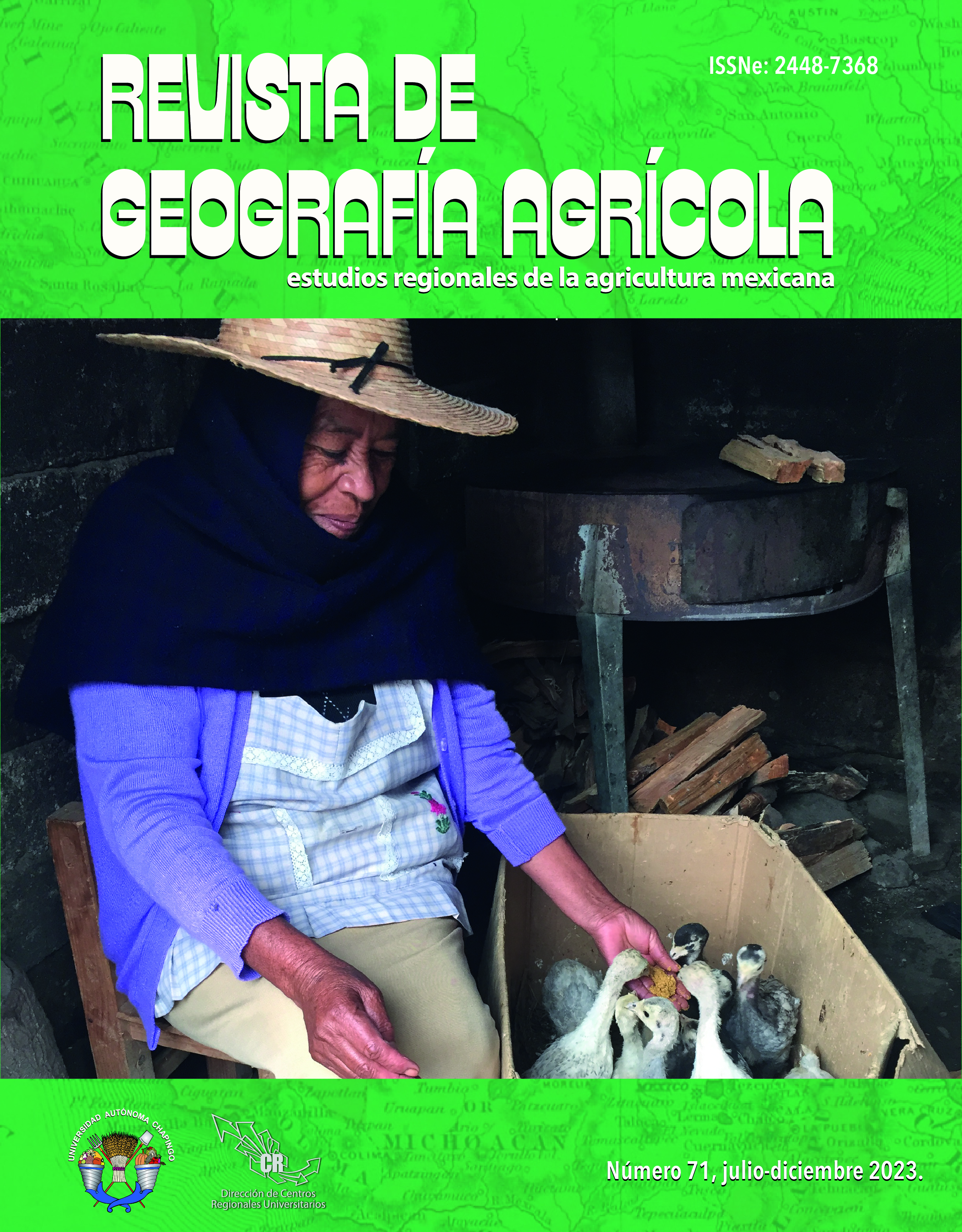Abstract
In 2019, the federal government negotiated the land for agricultural use with people from San Miguel Xaltocan to construct the Felipe Ángeles International Airport (AIFA by its acronym in Spanish) megaproject and promised, in return, the development of several projects with social benefits within the territory. This context created a negotiation and conflict environment between the government and the social actors from the community, an overly complex process due to the multiplicity of interests and different forms of perceiving their territory. Territorial representations of the social actors influenced the space-territory reconfiguration through processes of ownership and territorial scope in the long term. In these representations, some perceptions that constitute opportunities, hopes and risks are involved. The aim of this study was to interpret how territorial representations influence the territorial reconfiguration. The study was developed under the qualitative approach with techniques of semi-structured interview, field tour, the graphic representation projected in the memory of the people and document review.
References
Avendaño-Arías, J. A. (2017). Representaciones socioespaciales (toporrepresentaciones) de Bogotá: perspectiva de la (in)seguridad. Sociedad y economía (33), 55-75. Obtenido de https://doi.org/10.25100/sye.v0i33.5624
Begines-Juárez, J. M. (1999). Nextlalpan de Felipe Sánchez Solís: Monografía municipal. México: Instituto Mexiquense de
Cultura.
Berdegué, J. A. (2019). Una mirada crítica al desarrollo territorial rural. En M. I. Fernández, Perspectivas para el desarrollo rural Latinoamericano (págs. 263-284). Buenos Aires: Teseo.
Capel, H. (2016). Las ciencias sociales y el estudio del territorio. Revista bibliográfica de geografía y ciencias sociales, 21(1149), 1--38. Obtenido de https://doi.org/10.1344/b3w.0.2016.26319
García, C. I. (2006). Las representaciones sociales del territorio: enfoque y metodología para su estudio. Revista Controversia, (186), 78-87. Obtenido de https://doi.org/10.54118/controver.v0i186.178
Haesbaert, R. (2013). Del mito de la desterritorialización a la multiterritorialidad. Cultura y representaciones sociales, 8(15), 9-42. Obtenido de http://www.scielo.org.mx/scielo.php?script=sci_arttext&pid=S2007-81102013000200001
Haesbaert, R. (2019). Regional-Global: dilemas de la región y de la regionalización en la Geografía contemporánea. Buenos Aires: Consejo Latinoamericano de Ciencias Sociales CLACSO.
Hiernaux, D., y LIndon, A. (1993). El concepto de espacio y el análisis regional. Secuencia (25), 89-110. Obtenido de https://doi.org/10.18234/secuencia.v0i25.411
Lefebvre, H. (2013). La producción social del espacio. España: Capitán swing.
Llanos-Hernández, L. (2010). El concepto del territorio y la investigación en las Ciencias Sociales. Agricultura, Sociedad y Desarrollo, 7(13), 207-220. Obtenido de https://revista-asyd.org/index.php/asyd/article/view/1119
Pérez-Ríos, J. J. (2019). Propuesta conceptual: la producción social del espacio local alrededor de megaproyectos de infraestructura de transporte en Colombia. Estudios geográficos. Obtenido de https://doi.org/10.3989/estgeogr.201939.019
Raffestín, C. (2011). Por una geografía del poder. México: El Colegio de Michoacán.
Ramírez-Velázquez, B. R., y López-Levi, L. (2015). Espacio, paisaje, región territorio y lugar: la diversidad en el pensamiento contemporáneo. México: Instituto de Geografía UNAM.
Reyes-Barrón, M. C., Llanos-Hernández, L., y Arreola-Muñoz, A. V. (2017). Redes y actores sociales en la reconfiguración del territorio en el municipio de Catazajá, Chiapas. Geografía Agrícola (59), 35-53. Obtenido de https://doi.org/10.5154/r.rga.2017.59.005
Santos, M. (2000). La naturaleza del espacio: Técnica y tiempo, razón y emoción. Barcelona: Ariel S.A.
Santos, M. (2009). Espacio y método: Algunas reflexiones sobre el espacio. Gestión y ambiente, 12(1), 147-148. Obtenido de https://revistas.unal.edu.co/index.php/gestion/article/view/14214
Sosa-Velásquez, M. (2012). ¿Cómo entender el territorio? Guatemala: Cara Parens de la Universidad Rafael Landivar.
Touraine, A. (1994). Crítica de la modernidad. Argentina: Fondo de Cultura Económica.
Vargas-Ulate, G. (2012). Espacio y territorio en el análisis geográfico. Reflexiones, 91(1), 313-326. Obtenido de https://doi.org/10.15517/rr.v91i1.1505

This work is licensed under a Creative Commons Attribution-NonCommercial 4.0 International License.
Copyright (c) 2023 Revista de Geografía Agrícola




